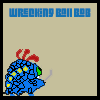Make the Spinelli one more realistic.
The city is fine
darkSpyro - Spyro and Skylanders Forum > Stuff and Nonsense > Spinellizilla
ClayFace
Blue Sparx
 Gems: 835
Gems: 835
|
#51 Posted: 18:48:18 10/08/2013 | Topic Creator
|
wreckingballbob
Emerald Sparx
 Gems: 4565
Gems: 4565
|
#52 Posted: 18:49:02 10/08/2013
It's meant to be fine she sucks at destroying.
---
5.7. |
ClayFace
Blue Sparx
 Gems: 835
Gems: 835
|
#53 Posted: 18:50:52 10/08/2013 | Topic Creator
She's awesome at destroying
|
wreckingballbob
Emerald Sparx
 Gems: 4565
Gems: 4565
|
#54 Posted: 18:52:11 10/08/2013
I bet she destroyed you!
---
5.7. |
ClayFace
Blue Sparx
 Gems: 835
Gems: 835
|
#55 Posted: 18:57:09 10/08/2013 | Topic Creator
She almost did
|
pankakesparx456
Diamond Sparx
 Gems: 7795
Gems: 7795
|
#56 Posted: 18:58:16 10/08/2013
She cannot destroy my kingdom!
RECONDITIONING CHAMBER, 15 JUICES!!!!!
---
Cool cool. |
ClayFace
Blue Sparx
 Gems: 835
Gems: 835
|
#57 Posted: 19:07:21 10/08/2013 | Topic Creator
Spinellizilla will destroy us all
|
ClayFace
Blue Sparx
 Gems: 835
Gems: 835
|
#58 Posted: 19:09:57 10/08/2013 | Topic Creator
You're going to get destroyed
|
ClayFace
Blue Sparx
 Gems: 835
Gems: 835
|
#59 Posted: 19:12:06 10/08/2013 | Topic Creator
Pasta is a cartoon
|
ClayFace
Blue Sparx
 Gems: 835
Gems: 835
|
#60 Posted: 19:28:33 10/08/2013 | Topic Creator
Spinelli destroyed my house
|
pankakesparx456
Diamond Sparx
 Gems: 7795
Gems: 7795
|
#61 Posted: 19:31:37 10/08/2013
She shall not destroy my lemon kingdom!
LEMON GUARDS ATTACK!
---
Cool cool. |
ClayFace
Blue Sparx
 Gems: 835
Gems: 835
|
#62 Posted: 19:51:33 10/08/2013 | Topic Creator
Spinelli stomps on your kingdom
|
ClayFace
Blue Sparx
 Gems: 835
Gems: 835
|
#63 Posted: 19:54:25 10/08/2013 | Topic Creator
Spinelli destroys the moon ad outgrows the Earth
|
ClayFace
Blue Sparx
 Gems: 835
Gems: 835
|
#64 Posted: 20:01:48 10/08/2013 | Topic Creator
|
SkyFace33
Red Sparx
 Gems: 27
Gems: 27
|
#65 Posted: 01:35:11 26/08/2013
Quote: wreckingballbob
Guys stop being mean to ClayFace. He's my friend on the Recess forum.
---
Hi there. Me and ClayFace are good friends. |
Ash Starkindle
Gold Sparx
 Gems: 2625
Gems: 2625
|
#66 Posted: 01:38:08 26/08/2013
Quote: SkyFace33
He constantly spams Spinelli. 
|
| joerox123 Yellow Sparx Gems: 1992 |
#67 Posted: 02:02:57 26/08/2013
![[User Posted Image]](http://gifmansion.com/GM/uploads/2012/03/ed-face-slam.gif) oh clayface
---
the road is long, we carry on try to have fun in the meantime☠ |
Kitty
Platinum Sparx
 Gems: 5106
Gems: 5106
|
#68 Posted: 11:33:43 26/08/2013
Quote: SkyFace33
A pancake, also known as a hotcake or flapjack is a thin, flat, round cake prepared from a batter and cooked on a hot griddle or frying pan. In Britain it is made without a raising agent, and is similar to a crêpe.[1] In America, a raising agent is used (typically baking powder). The American pancake is similar to a Scotch pancake or drop scone. They may be served at any time with a variety of toppings or fillings including jam, fruit, syrup, chocolate chips, or meat. In America, they are typically considered to be a breakfast food. In Britain and the Commonwealth, they are associated with Shrove Tuesday, commonly known as Pancake Day, when perishable ingredients had to be used up before the fasting period of Lent began. Archaeological evidence suggests that pancakes are probably the earliest and most widespread cereal food eaten in prehistoric societies.[2] The pancake's shape and structure varies worldwide. A crêpe is a thin Breton pancake cooked on one or both sides in a special pan or crepe maker to achieve a lacelike network of fine bubbles. A well-known variation originating in Southeast Europe is Palačinke, a thin moist pancake fried on both sides and filled with jam. The Ancient Greeks made pancakes called τηγανίτης (tēganitēs), ταγηνίτης (tagēnitēs)[3] or ταγηνίας (tagēnias),[4] all words deriving from τάγηνον (tagēnon), "frying pan".[5] The earliest attested references on tagenias are in the works of the 5th century BC poets Cratinus[6] and Magnes.[7] Tagenites were made with wheat flour, olive oil, honey and curdled milk, and were served for breakfast.[8][9][10] Another kind of pancake was σταιτίτης (staititēs), from σταίτινος (staitinos), "of flour or dough of spelt",[11] derived from σταῖς (stais), "flour of spelt".[12] Athenaeus is his Deipnosophistae mention staititas topped with honey, sesame and cheese.[13][14][15] The Middle English word Pancake appears in English in the 1400s. In Austria, the Czech Republic, and Slovakia pancakes are called palatschinke, palačinka, and palacinka, respectively (plurals palatschinken, palačinky, palacinky). In Romania they are called clătită (plural clătite). In countries of former Yugoslavia (Slovenia, Serbia, Croatia, Macedonia, and Bosnia) they are called palačinka (plural palačinke). In these languages, the word derives from Latin placenta, meaning cake. These pancakes are thin and filled with apricot, plum, lingonberry, strawberry or apple jam, chocolate sauce or hazelnut spread. Eurokrem, Nutella and Lino-Lada fillings are favorite amongst younger population. A traditional version includes filling pancakes with cheese, pouring yoghurt over them and then baking in an oven. Kaiserschmarrn is an Austrian pancake including raisins, almonds, apple jam or small pieces of apple, split into pieces and sprinkled with powdered sugar. In Hungary, pancakes called palacsinta (also derived from Latin placenta) are made from flour, milk or soda water, sugar and eggs. Sweet wine is added to the batter. The filling is usually jam, sugared and ground walnuts or poppy seeds, sugared cottage cheese, sugared cocoa or cinnamon powder, but – especially in hortobágyi palacsinta – meat and mushroom fillings are also used. Gundel palacsinta is a Hungarian pancake, stuffed with walnuts, zest, raisins and rum, served in chocolate sauce. The dish is often flambéed. Hungarian pancakes are served as a main dish or as a dessert. Home-made naleśniki filled with sweet white cheese (Poland) In Poland, thin crêpe-style pancakes are called naleśniki (pronounced naleshniki). Like any crêpe or blintz, they can be served with a variety of savory or sweet fillings as a main dish or a dessert. Sweet fillings include fresh fruits (e.g. bilberries), jams, and soft white cheese with sugar. Savory fillings include fried vegetables, fried chicken, minced meat, and a variety of added ingredients such as potatoes, mushrooms, cabbage, or ham. German pancakes are called Pfannkuchen (Pfanne and Kuchen meaning "pan" and "cake"). They are thicker than French Crêpes and usually served with sweet or occasionally savory fillings. Fried apple rings covered by pancake dough and served with sugar and cinnamon are called Apfelküchle. In Swabia sliced pancake strips (Flädle) are often served in soup. In some regions (Berlin, Brandenburg, Saxonia) pancakes are called Eierkuchen, as the term Pfannkuchen refers to Berliners there. Kaiserschmarrn is a thick but light, caramelized pancake that is split into pieces, filled with fruits and/or nuts, sprinkled with powdered sugar and served with a fruit sauce. It is believed that it was first prepared for Kaiser Franz Joseph I of Austria. It is popular in the former Austria-Hungary and Bavaria. Eastern Europe Pancake was adopted in the Russian and the Ukrainian cuisines from Poland, which call them nalesniki[18] and nalysnyky respectively, after its Polish name. In Belarus, Russia and Ukraine, pancakes may be breakfast food, appetizer, main course, or even dessert. Blintzes (Russian: блинчики blinchiki) are thin crepes made without yeast. Blini (Russian: блины) are thicker pancakes made from wheat or buckwheat flour, butter, eggs, and milk, with yeast added to the batter. Blini cooking has a long history in Russia, dating back to pagan traditions and feasts, which are reflected in today's "pancake week" celebrated in the winter before the Great Lent. Small thick pancakes made from yogurt or buttermilk based batter (without yeast) are called oladyi (оладьи) (diminutive: oladushki оладушки, further abbreviated as ladushki ладушки). Northern Europe This article is missing information about Norway. This concern has been noted on the talk page where whether or not to include such information may be discussed. (August 2013) Nordic pancakes Nordic pancakes are similar to the French crêpes. In some of the Nordic countries they are served with jam or fruit, especially lingonberries (or the butter from that fruit) as a dessert with a variety of savory fillings. Traditional Swedish variations can be exotic. Beside the usual thin pancakes, called pannkakor, which resembles the French crêpes and, often served with whipped cream and jam, are traditionally eaten for lunch on Thursdays with pea soup, the Swedish cuisine has plättar which resemble tiny English pancakes, and are fried several at a time in a special pan. Others resemble German pancakes but include fried pork in the batter (fläskpannkaka); these are baked in the oven. Potato pancakes called raggmunk contain shredded raw potato, and may contain other vegetables (sometimes the pancake batter is omitted, producing rårakor). Raggmunk and rårakor are traditionally eaten with pork rinds and lingonberry jam. A special Swedish pancake is saffron pancake from Gotland, made with saffron and rice, baked in the oven. It is common to add lemon juice to the sugar for extra taste. The pancakes are often served after a soup. Another special "Swedish pancake" is the äggakaka (eggcake), also called skånsk äggakaka (Scanian eggcake), it is almost like an ordinary Swedish pancake but it is a lot thicker and also a lot more difficult to make due to the risk of burning it. It is made in a frying pan and is about 1½ to 2 inches thick and is served with lingonberries and bacon. The Norwegian variety is commonly eaten for dinner, traditionally with bacon, jam (typically bilberry) or sugar. Finnish pancakes greatly resemble "Plättar" and are called "Lettu", "Lätty", "Räiskäle" or "Ohukainen". |
MoonHorizons
Gold Sparx
 Gems: 2826
Gems: 2826
|
#69 Posted: 15:26:05 26/08/2013
Quote: Kitty
Best information about pancakes ever. Bravo
---
the more obscure your favorite cartoons are, the more refined your taste is |
| DummyZ Gold Sparx Gems: 2844 |
#70 Posted: 18:00:31 26/08/2013
Well this is certainly a topic <.<;
I had to. |
Please login or register a forum account to post a message.

![[User Posted Image]](http://fc06.deviantart.net/fs70/i/2010/030/5/0/mega_spinelli_3_by_trohobo.png)
![[User Posted Image]](http://i.imgur.com/FoCY1xq.png)
 darkspyro
darkspyro net
net